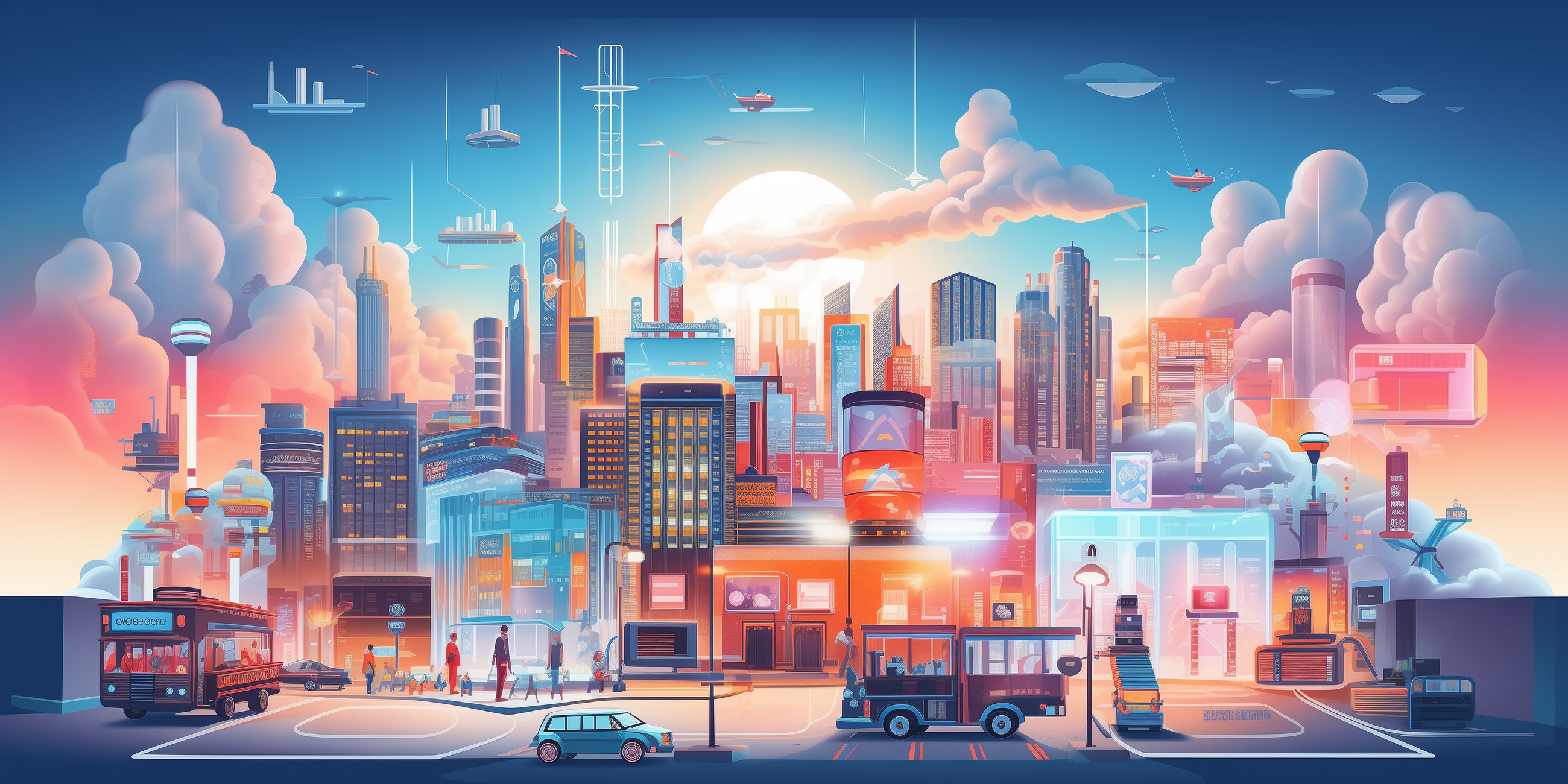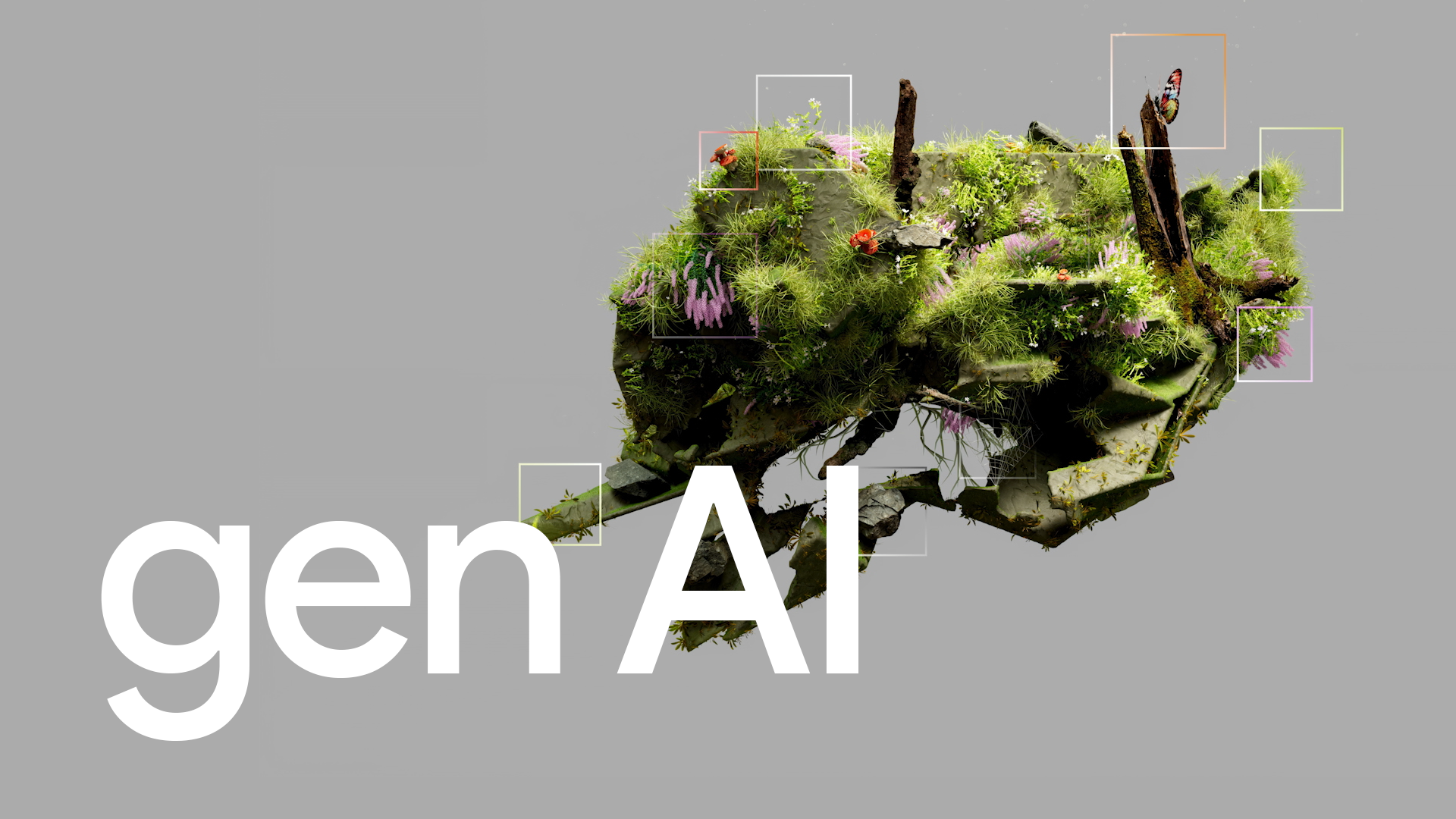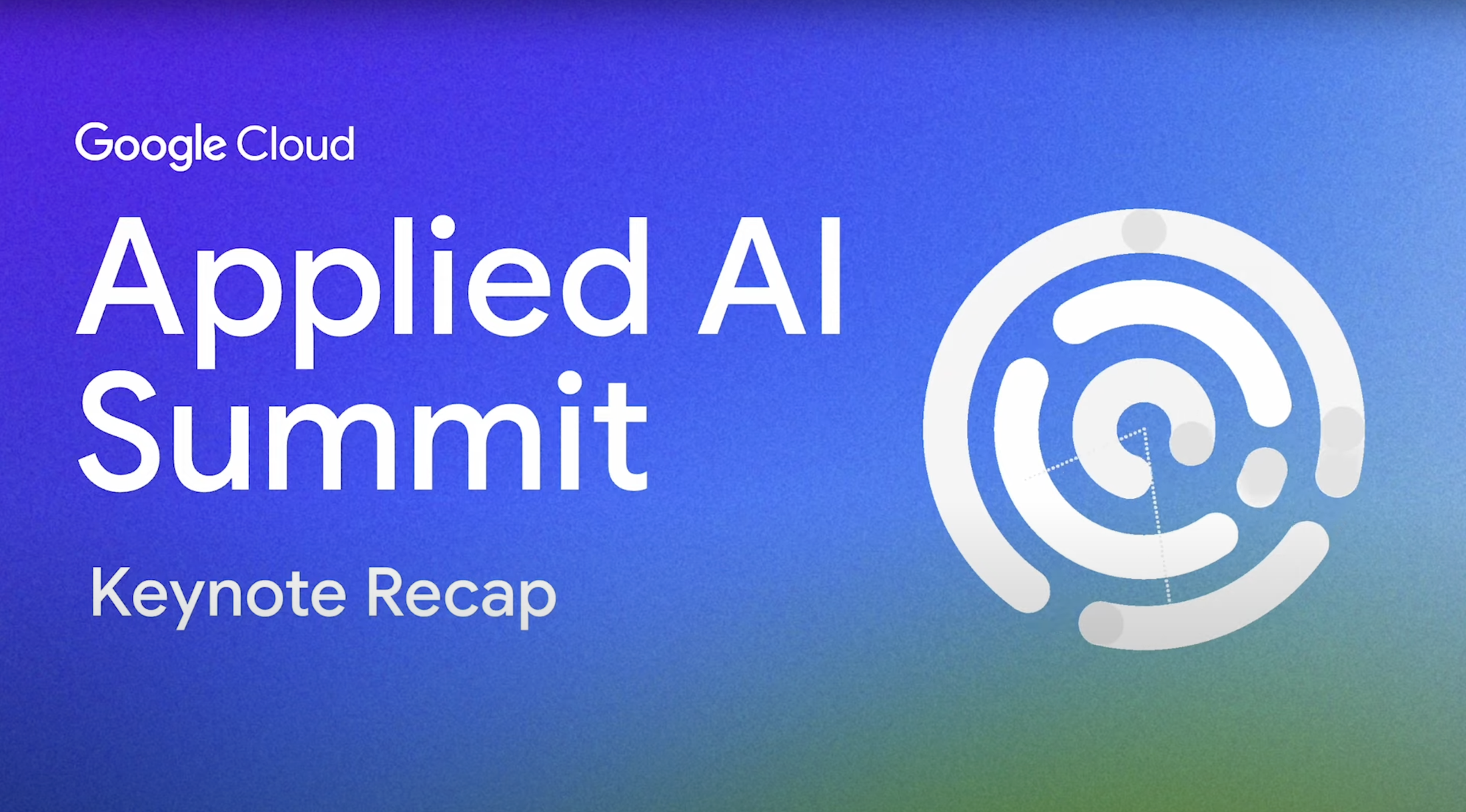Putting AI to work: Where gen AI is impacting industries in 2024

Carrie Tharp
Vice President, Strategic Industries, Google Cloud
Our VP for strategic industries has talked with hundreds of business leaders about gen AI. Here's where they see the technology headed this year.
One of the most exciting things about generative AI isn’t only how it’s poised to revolutionize our experiences in the future — it’s also turning our dreams of the past into a reality.
A decade ago, when I was a VP for strategy and innovation at Travelocity, we envisioned a virtual travel agent that could help plan complex trips tailored to an adventurer’s interests and requirements — just like you’d get with a real agent. However, we quickly determined the technology available was simply not up to the task. We couldn’t create all the possible travel combinations in advance, manage boundless constraints, or pull off multi-turn search and conversational site exploration. Above all, even if we could have figured out how to do it — our teams were stretched thin with the day-to-day demands of the digital experience and wouldn’t have had the time to actually build it.
Last summer, I watched as we helped Priceline launch a gen AI-powered virtual assistant and realized many former pipe dreams are now well within the realm of possibility.
I’m not alone in recognizing how gen AI can bring new innovation to existing products and manual processes. We’ve seen a number of exciting gen AI projects from across industries: financial ratings agency Moody’s is exploring models to collate and synthesize large volumes of data for employees, Fox Sports is improving content production by accelerating how employees search for relevant footage in its archive of nearly two million videos, and Wendy’s is reinventing how you order at the drive-thru.
What’s most striking about these examples is how companies aren’t necessarily using gen AI to reinvent the wheel. They’re mostly improving existing experiences for employees and customers — and doing it in record time.
In the enterprise, time is a precious commodity that’s always in short supply. More often than not, decisions around strategy involve deciding what to prioritize given the available resources. The “magic” of gen AI is less about delivering novel breakthroughs and more about maximizing what we already have. Being able to streamline, automate, and improve the mundane is transformational in itself.
After speaking with executives across financial services, healthcare, retail, automotive, and more industries, it’s evident that generative capabilities offer new avenues to improve access to data and information, boost productivity, and deliver deeper personalization. We’re still in the early phases of this new age of experiences and the most futuristic-seeming projects are more likely to be multi-year journeys, but that doesn’t mean gen AI isn’t already having an impact on enterprises in a big way.
A common refrain I heard when I first started speaking with customers is that gen AI will be an “another metaverse.” No one was eager to fall for another over-hyped trend destined to deliver little tangible value or, worse, fail to launch at all. However, this initial skepticism has quickly disappeared, and I’m encountering more and more “Aha!” moments with each meeting I take.

Once executives see gen AI models in action and realize how many practical applications are already there for the taking, we now spend most of our time honing in on industry challenges or discussing specific use cases.
The big difference with gen AI is that its broad scope and potential to bring bottom-line value is already driving investment from senior leadership in a way few technologies have in the past. AI has become the domain of the boardroom as much as the IT department, creating a level of momentum and business alignment rarely seen with new technologies. On top of that, gen AI helps you tap into the potential of the building blocks you already have — your existing technology investments, information, and workforce.
Still, it’s crucial not to fall into the trap of chasing shiny objects or — going back to my Travelocity experience — dreaming beyond the technology capabilities in your toolbox.
Cutting down on “pre-work”
One of the more intriguing points I’ve heard from organization’s succeeding with gen AI is how much their workers have come to value it, and how quickly. While surveys show some unease with the technology remains pervasive, the tipping point comes quickly once it helps those same workers ease the daily burdens of their work.
Instead of a source of workplace worry, our customers are telling me how gen AI has sparked employee excitement and engagement. For the first time, data and other specialized skills are now accessible and, more importantly, understandable to a much larger variety of users — not just experts.
For example, gen AI chat interfaces can help gather the information and data for our most valuable work — or “pre-work” as I like to call it. Instead of digging through applications, researching, or requesting resources, a gen AI collaborator like Duet AI can speed up pre-work tasks by allowing workers to get what they need with simple prompts in natural language all in one application window.
Time and again, I’ve heard the same story. Unshackled from drudgery, employees can direct their talents towards reasoning, creativity, and customer empathy, unlocking greater innovation and productivity. In a recent study of the industrial sector, the introduction of AI-human collaboration led to a 35% increase in productivity and a 20% rise in worker job satisfaction, all while achieving savings of up to 40%.
At the same time, gen AI is acting as a powerful partner that can help skilled professionals tackle their work more effectively and still deliver top-notch results. Similar to my own experience at Travelocity, many new IT experiments are called off before they even get started due to lack of available resources and skills. Rather than building and training from scratch, developers can now leverage a variety of pretrained gen AI models to get started and even use gen AI coding assistants to generate, debug, and even explain code.
With the ability to lean on gen AI as a collaborator, organizations are now assessing their long-standing workflows to identify the areas with the most data-intensive, manual work. Non-value tasks, such as note-taking, summarization, and analysis, are all prime candidates for optimization.
Even in highly-regulated industries, such as healthcare, financial services, and government and defense, gen AI represents unprecedented opportunities to automate and synthesize data. For instance, HCA Healthcare is using AI to accelerate drafting medical notes by eliminating manual entry and dictation. As one leader at HCA Healthcare put it to me, gen AI “reduces the toil and increases the joy” in patient care. By returning time to these doctors and claims teams, they can redirect their energy to providing greater services to patients with less waste or frustration.
The key for organizations creating a strong foundation for integrating gen AI technologies is to proactively adopt responsible AI frameworks and build an approach that incorporates
explainability, regulation, privacy, and security right from the start.
Striking up a conversation
Picture this: A personal online stylist that can find the perfect outfit for any occasion, down to your size, the material and fit you prefer, and in your favorite color — available instantly on your laptop or mobile phone, 24 hours a day, every day of the week. This conversational, personalized interaction isn’t a far-fetched promise, it’s the reality retailers are already building with gen AI.
Product search experiences have been limited to taking place in search boxes on websites for decades, but gen AI’s unique ability to recognize, predict, and generate human language is delivering a new level of personalization and intuitive interaction that wasn’t previously possible. As we start reshaping a new generation of UX innovation, we’re seeing the first practical applications of these capabilities being put to work improving call center experiences across multiple industries.
One of the more intriguing points I’ve heard from organization’s succeeding with gen AI is how much their workers have come to value it.
Traditional rule-based chatbots are limited to scripted responses based on identifying keywords. Whereas gen AI chatbots are trained on massive datasets, enabling them to apply context, adapt their responses, and improve as they analyze user inputs.
As a result, brands and companies are building sophisticated AI assistants that can chat with you online like a person could, act as a digital guide in the physical world, and perform complex interactions like negotiating better deals or delivering the perfect recipe based on ingredients in your fridge.
In addition, combining gen AI with other AI technologies and tools can infuse AI assistants with even more advanced intelligence and reasoning, allowing them to handle more complex actions and requests. For instance, gen AI assistants might tap into predictive AI systems to analyze historical data and vision AI tools to analyze a customer’s recent photos to understand and capture their ideal personal style and match them with available styles and inventory in their correct size — all while capturing the distinct voice and values of your brand.
Cutting through the data
Disparate, fragmented data has long plagued digital transformation, leaving data and development teams responsible for finding ways to connect, migrate, or centralize data from different systems across business operations. This challenge has only continued to grow in scope and complexity, spurred on by an explosion of unstructured enterprise data that organizations generate but aren’t — or won’t be — able to use.
Last year, that began to change, and meaningfully so. Gen AI’s rapid evolution throughout 2023 brought us more robust solutions to fine-tune models and go beyond training datasets by connecting external and proprietary sources. In addition, the coming wave of multimodal models like Gemini means that LLMs will soon be capable of handling, combining, and understanding all different types of inputs simultaneously, including text, code, audio, image, or video. This is especially important for the unique challenges found in each industry.
The information fueling your organization is the nucleus of collaboration, communication, and creative endeavors across all lines of business, as well as your competitive differentiator. Enabling direct data access to enterprise applications with gen AI can help maximize the value of enterprise data, putting an organization’s entire corpus of information right at people’s fingertips.

To take a real-world example, a CIO for a major retailer confided to me that they didn’t fully understand the value of using gen AI tools, despite having access to them. During our meeting, I showed them how to use Looker’s gen AI chat features to query their business data. When they realized they could “chat” with their business data to get answers instead of asking an analyst to manually compile a report, it was so rewarding to see that “Aha!” cross their face.
They went from uncertainty to a clear understanding of the potential time this could save for analysts — and they immediately wanted to know what else they could do.
These new advancements are motivating organizations to look at their systems with fresh eyes and reconsider how they can make the most of the data in them by embracing gen AI.
Whether it’s an executive compiling a report, a store associate looking for production information for a customer, or a manufacturing technician planning maintenance schedules — people at every level of an organization can easily access all their data and discover insights just by writing a simple prompt.
Leading with gen AI
In the year ahead, we’re going to see even more gen AI projects come to life. As the enterprise shifts from experimentation to execution, we’ll see more pilots move to full-scale production. Now is the time to address critical gaps and lay the foundation for gen AI’s immense potential.
Leaders must use 2024 to upgrade infrastructure for security and scalability, upskill their workforces, implement rigorous responsible AI governance frameworks, and adapt their mindsets in order to succeed.
Even if you feel like AI’s not useful to your organization yet, you can’t sleep on getting ready. I anticipate a real shakeout between those who are leaders and those who are laggards on AI, which is why we’re so eager to help our customers and partners figure this out.
Predicting the time of consumer adoption of gen AI experiences is not a perfect science, but it will come lightening fast when the right experience and data are in play. Now is the time to break down your current challenges, identify friction points for your customers, and start working on the first steps of your gen AI innovation today to set the stage for the possibilities of tomorrow.
Want to hear more from other Google Cloud industry leaders? They’ve been sharing their predictions for the year ahead with many leading publications, which you can find linked below:
Financial Services: Bankers need to prepare themselves for a surge in AI adoption. American Banker.
Healthcare: A bold And promising vision for healthcare In 2024. The Google Keyword blog.
Retail: AI Steps into the Retail Arena. Retail Touchpoints.
Games: Games in 2024: The Year Of AI Passion Projects. Game Developer.
Life Sciences: Trust and treatment: GenAI in life sciences in 2024. Pharma Phorum.
Media & Entertainment: Navigating the Future of AI for Media & Entertainment: Self-disrupt or Self-destruct? Streaming Media.
Public Sector: Reimagining tech modernization for the future in government. FedScoop.
Opening image created with Midjourney, running on Google Cloud, using the prompt: a magazine-style flat illustration of a tableaux showing lots of things representing lots of industries glowing and triumphing across a cityscape... make it look more contemporary and realistic.



